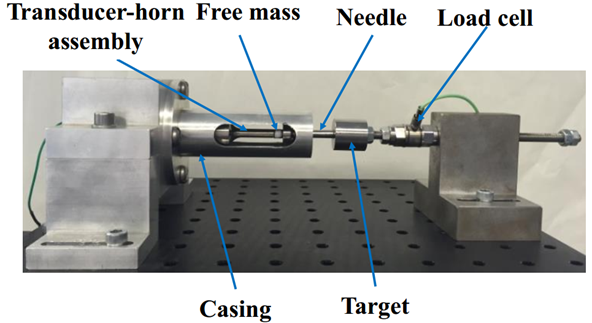Power ultrasonics applications
Prof Margaret Lucas, Dr Patrick Harkness
Power ultrasonics defines a field of research where low ultrasonic frequency vibrations, usually in the 20-100kHz range, are used to affect an irreversible change in a material or other medium.
The range of applications in power ultrasonics is very wide and can involve excitation of effects such as heating, melting, fracture and cavitation, in processes such as joining, cutting, machining and cleaning. Our power ultrasonics research involves projects spanning materials processing, space applications and surgical devices.
A common focus of the research is in the design and characterisation of ultrasonic devices in terms of the most beneficial vibration behaviour. Novel ultrasonic devices can be proposed that aim to eliminate or enhance nonlinear responses, depending on the application, providing insights and solutions for the control of nonlinear vibration characteristics.

Penetration of difficult materials can be achieved by incorporating different mechanisms in devices; one we are researching relies on the conversion of high frequency vibrations of an ultrasonic horn to low frequency impacting of a tool on target material via a free mass, and another on combining longitudinal and torsional vibrations at the tip of the horn. Both provide advantages by removing the need to superimpose ultrasonic excitation onto a rotational motion, allowing non-rotational drilling, coring, cutting and insertion.


